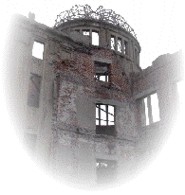
The man who knows how to split the atom but has no love in his heart becomes a monster.
Krishnamurti (1895-1986)
Education and the Significance of Life
The Walled Off Hotel
Here's a lesson idea based on street artist Banksy's Walled Off Hotel. It took me over a day to notice the pun (ever stayed at the Weldorf Astoria?),
The zip file contains a copy of a 643 word article posted on truthdig, a crossword using words from the article along with some photos and quotes from the hotel's website and finally a video clip from the BBC world news.
Here are the discussion questions that go with the crossword:
- What does the phrase "Occupied Territories" mean to you?
- Can you think of any differences between what the BBC News report said about the hotel and the truthdig article?
- Can you think of any other man-made barriers from history? Why were they built? What happened?
- What do you know about the artist known as Banksy?
- Would you like to stay in the Walled Off Hotel? If yes, why? If no, why not?
- What do you now know that you didn't know before?
And here's the video:
Suggestions for Use
The experience, size and nature of a class should always influence, if not determine, the teacher's approach. For some classes I might skip the crossword altogether, for others I might just show the video. I can't imagine getting through all the material in a single hour's class. So take these suggestions as you find them:
Introduction: Ask the class if they have heard of the Waldorf. Maybe someone has eaten or heard of a Waldorf salad. Get the class to spell Waldorf and write it on the board. Then underneath this write the walled off hotel, explain the pun and then ask what and where they think the walled off hotel might be. The first class I did guessed it was something to do with Trump's wall and Mexico.
Next: Ask question one from the crossword sheet and find out what the students say but refrain from offering any answer yourself.
Showing the Video: The first showing can be without sound.
One technique is to get the students into groups of four with a pack of cards. Each takes a suit and the cards are dealt face up one at a time to make a pile. Students make any sentence about what they can see as their suit comes up. For groups of three either have the spare suit wild (anyone can make a sentence) or treat it as the previous suit (same speaker goes again). For groups of two each student takes a colour rather than a suit. The aim is to get through as many cards as possible before the video ends.
Another technique is to just talk over the video. It's possible to do this and avoid playing the real sound track at all. This is certainly an option for weak listeners.
After showing the video with sound the student should discuss it. Confident groups can just divide into pairs and use English immediately. An alternative is get students into pairs or small groups and give them a minute or so to discuss the video in their native language. Then they can find new partners and share their thoughts in English.
Quiz Time: How many questions can the students answer in two minutes. Here's a list of possible questions. You can click on the question numbers to toggle the visibility of individual answers
I have an app that randomly displays questions from a text file but another way is to get the students to choose a question number or even put the questions onto strips and have students pick them one at a time. The advantage of strips is that each student can be given one before the video is shown and try to find the answer to that one question (this changes the nature of the exercise). The disadvantage is that they are time-consuming to prepare. Usually when doing a quiz I refrain from giving answers to missed questions and instead encourage the students to find the answers during a second showing.
The article: One technique I sometimes use with articles is skimming. Fire out simple questions and get the students to race against the clock to find the answers (10 seconds is a nice round time limit) For example:
- How many beds are there in the hotel?
- In what year was the Balfour Declaration?
- How high is the wall?
- Which room in the hotel has a jacuzzi.
- What are the sofas in the hotel made of?
- What day of the week did the hotel first open?
- Who started re-arranging the furniture?
- How many cherubs are there in the piano room?
- What's the name of the hotel manager?
- How many stencilled images were sprayed on the wall in 2005?
Note that the questions above bounce around the text rather than going from the beginning through to the end. This is because the aim is to get the students to skim rather than read. However, the process can be made easier by asking questions on one page at a time.
When presenting an article for reading I usually pull out some words to focus on and list them separately. Students can be invited to explain the meanings of the words or suggest or guess an alternative word or phrase. It is also possible to allow the students to use dictionaries to translate the words into their native tongue or use a straight English dictionary to aid understanding.
The Crossword: This uses words from the wordlist. One way to use the crossword is to present it before the article and see how many answers the class can find before receiving the article.
Comparing the Video and Article
The points I would want to draw out include:
- The article mentions the reason for the timing of hotel opening - the centenary of the Balfour Declaration. The BBC news report does not. The article has more context.
- The article uses the term "colonial club" whereas the BBC news report uses the phrase "English gentleman's club".
- The BBC news report is more negative, even hostile in tone. It mentions concerns that Banksy depicts the Palestinians as downtrodden, that he is somehow normalising the wall, almost making a feature out of it and from an Israeli perspective undermining something essential to Israeli security.
- The BBC report not only fails to question the legality of the wall it provides "false balance" by including an interview with the architect of the wall. The report talks about terrorism without any historical context and the reality of the occupation is not included.
- Neither the truthdig article or the BBC news report mention the International Court of Justice considers the wall illegal under international law.
- Top Page
- Splog!
- Articles
- Games
- Across The Table
- Add One More
- Anaconda
- Be A Monster!
- Black Hole (board game)
- Bombs Away!
- Catch!
- Catch-Caught-Caught!
- Centipede
- Charades
- Co-operative Quiz
- Crocodile
- Dice Stack
- Fast Food Tag
- Find My Number
- Find The Penny
- Football
- The Happy Game
- Line Up!
- Maze Challenge
- Natty Narration
- Nose Nose Nose
- One Step Forward!
- Pair Fluency Match 7 - Death Wish
- Pair Fluency Match 7 - Go Green!
- Parrot Parade
- Passport Control
- Reach The Top!
- Snake
- SockIt!
- Tickle Time
- What Cards
- Which One?
- Whose Shoe?
- World Cup Football 2018
- You, You, Me!
- Wake Up
- Packs
- Sheets
- Songs and Music
- Strips (songs and otherwise)
- Stories
- Techniques
- Video
- Environment
- Japan
- The 75th Anniversay of the bombing of Hiroshima
- The 75th Anniversay of the bombing of Nagasaki
- Cars in Japan
- Coronavirus Olympics
- Forest Bathing
- Japan and the Summit
- Japan and World War Two
- Multiculural Japan?
- Olympics Two Tokyos
- Plastic in Japan
- Return to Fukushima
- The Anniversary too Important to Cancel
- Typhoon Jebi
- Yayoi Kusama's Infinity
- Other
- This Week In History
- January, February, March
- April, May, June
- Sub Menu Item
- This Week in History: April 8-10
- This Week in History: April 12-15
- This Week in History: April 19-24
- This Week in History: April 24-26
- This Week in History: May 6-11
- This Week in History: May 11-14
- This Week in History: May 18-23
- This Week in History: May 25-31
- This Week in History: June 1-5
- This Week in History: June 11-14
- This Week in History: June 22-27
- This Week in History: June 15-21
- This Week in History: June 29 - July 5
- July, August, September
- This Week in History: July 6-12
- Sub Menu Item
- This Week in History: July 14-19
- This Week in History: July 27-31
- This Week in History: August 2- 6
- This Week in History: August 17-21
- This Week in History: August 27-30
- This Week in History: August 31 - September 6th
- This Week in History: September 7-13
- This Week in History: September 22-27
- This Week in History: September 14-20
- This Week in History: September 28 - October 4
- October, November, December
- Quizes
- Vocab



